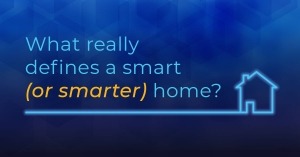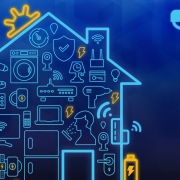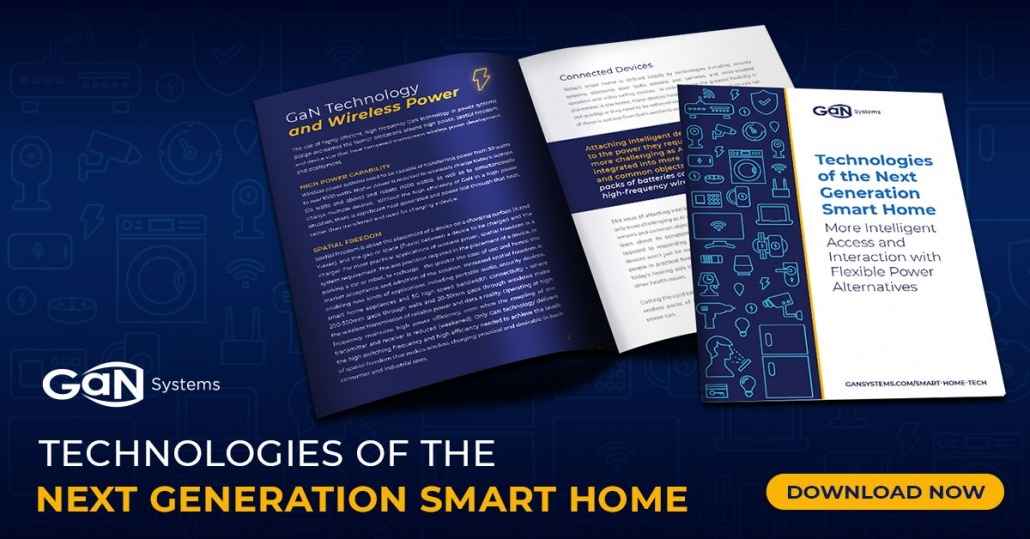Rethinking What’s ‘Smart’ For The Next Generation Smart Home
By GaN Systems CEO Jim Witham
Too often, the fact that a technology merely exists drives the direction of a specific implementation, rather than focusing on developing technologies in response to real and important human needs. This has often been the case of the ‘smart home’ in its various stages of automation and intelligence.
What would a ‘smarter home’ look like if we more closely consider the inter-related nature of the technologies it requires versus looking at each in isolation? And which of those technologies rises to the level of greatest importance when we look through the lenses of some of the most important social, economic, and environmental needs of our time?
Social, Environmental, and Economic Trends Should Inform the Discussion of the Smart Home as Much as Technology
It is important to look at the definition of a smart home – or really a ‘smarter’ home within smarter environments (neighbors, communities, and cities) – as a place that is available for all or certainly many more than it is today. It is the time to leave behind the definition as a place of privilege and replace it with one of accessibility and possibility. Some of the important trends and considerations that impact the way that those in the technology industry should think about the ‘smarter home’ include:
- Disruptions to our traditional means of employment impacting where we live and how a home is used.
- Changes in the housing market around affordability and availability effecting where people can live versus where they work.
- Concerns about the current healthcare system accompanied by interest and need for greater self-monitoring and digital health solutions.
- The energy ecosystem impacts resulting from climate change and an increasingly ‘electrified’ world.
The Purpose of the Next Generation Smart Home

Everyone has a different concept of what ‘home’ should mean and different people have varying levels of capacity, flexibility, or opportunity to define this. Here are some key focus areas of what ‘home’ – and the technologies we bring into it – should now be about:
- Relevance to daily tasks: the productivity automation path.
- Life enhancing self-improvement along the lines of personal health and mental well-being.
- Simultaneously address personal level as well as systemic issues: optimizing decisions for both inside the home and across the community.
Given these larger trends and a different perspective on defining ‘home,’ what then are the technologies of importance for a smarter home?
The Relevant Technologies of Change for a Smarter Home
Three important categories of technology are deeply interconnected in creating the ‘smarter home’ of the near future possible:
- Connectivity
- Increasingly invisible and intelligent devices
- Energy access and efficiency
5G Connectivity
Connectivity is the basic building block of the smarter home. It is what enables the home to essentially become like an invisible and always adapting computer linked to an increasingly valuable and data (and energy) hungry ecosystem of smart devices. Reliable data connections are important inside the home, and to the outside world. But not all communities have been treated equitably in the connectivity story to date. Some gaps result from infrastructure inefficiency that can be addressed by new technologies such as 5G, while other parts of it are found in the policies and attitudes that have created Internet deserts and data divides.
5G can be a transformative technology for connecting the smarter home with fast bandwidth and reduced latency in a wire-free setting, with greater energy efficiency and ease and economy of installation. Through-wall wireless power is an important complementary technology to 5G because it removes the time, cost and location barriers of wired approaches. By being wireless in terms of both power and data, 5G avoids the cost and time of installing physical fiber lines in both rural and urban environments.
Increasingly Intelligent and Invisible Connected Devices
Today’s smart home is defined largely by technologies including the electronic door locks, sensors, and camera of security systems; and voice-enabled speakers and video calling devices. In order to have the greatest flexibility in placement in the home, these devices have to run on batteries (which can run out quickly) or they need to be tethered via a cable to an electric outlet. Neither of these is optimal from both aesthetic and practical purposes. This issue of attaching intelligent devices and networks to power will become only more challenging as AI capabilities are integrated into more and more new sensors and common objects – optimally placed so that the ‘home’ can actually learn about its occupants and eventually even anticipate their needs as opposed to responding to rudimentary commands. Cutting the cord takes on an even bigger meaning in this scenario. The real solution becomes wireless power. By sending power to a small receiver embedded in a device via a transmitter that can be plugged into a wall socket in another part of the room, devices in a wireless power environment receive the energy they need inside or outside the home.
Energy Access And Efficiency
Smarter homes and communities will have diminished value and relevance if the energy their devices require is unreliable and if its production results in electricity replacing fossil fuels as the new global polluter. Extreme weather, more frequent emergency conditions (wildfires) and questionable peak demand reliability during temperature extremes are driving individuals and neighborhoods to take increasing responsibility for power access and resiliency. Both distributed energy resource systems (DERs) for the generation and transmission of power, as well as new forms of energy storage systems (ESS), will be as important as the smart devices and networks they power. These systems will provide not only greater efficiency, but also intelligent energy management by using sensors and AI to regulate power storage and use. These systems will know when to use and when to be aggressive about saving energy.
The Case for the Smarter Home of the Near Future
Smarter homes and communities are being driven by both technology advances in hardware and AI, as well as by the significant environmental and economic changes present at both individual and systemic levels. Social and legal contracts around potential technology invasiveness and privacy will still need to be identified and proactively addressed. 5G networks, more intelligent and invisible devices, and new technologies of energy generation and efficiency will then all need to work together to make this a future that is possible and accessible for all.



